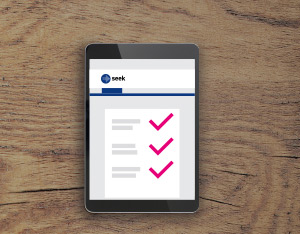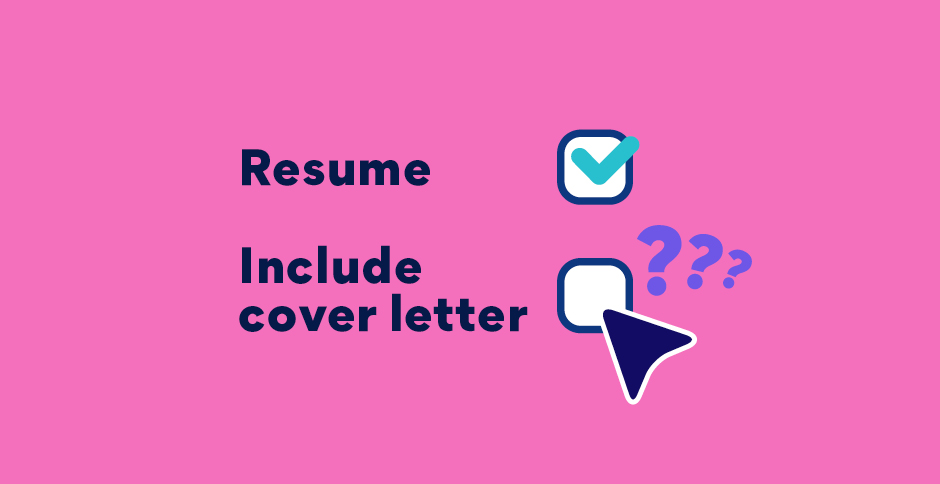When a task seems overwhelming, a good way to get started is by breaking it down into a smaller, more manageable step-by-step process. That way, instead of finding yourself stuck, asking ‘where do I begin?’, you can work your way through the task methodically.
With that in mind, here are seven steps to assist you in your job application process.
-
Tailor your cover letter.
The truth is, people who send generic cover letters to job ads, don’t often get called back.Tailoring your application, according to Erin Chambers from Careering Onwards, is about “putting forward the appropriate version of you for the role.”
Talk about why you want to work at that particular company: is it something about their culture? Or, perhaps, their previous work has inspired you? Outline the skills you can bring to the role, highlighting your most relevant experience and making sure you include keywords from the job ad. -
Highlight relevant experience and achievements in your resume and SEEK Profile.
Recruiters and employers see hundreds of resumes and profiles, so you need to show them how you can hit the ground running. Highlight key achievements that relate to the job on offer. You may even want to go further than this if your previous experience allows it. For example, link how you could apply these demonstrable achievements to an initiative within the organisation or role.Recruiters and employers read hundreds of resumes, so you need to show them how you can hit the ground running. Highlight key achievements that relate to the job on offer.
-
Spell check everything.
It’s simple, says Chambers, “grammar and spelling are important.” First impressions count, so don’t submit an application explaining how you have an eye for detail only for it to be riddled with errors.
Get someone to read your application before you send it off – often another set of eyes will pick up things you’ve missed. There’s also software that can help ensure that no grammar mistakes slip under the radar. Check out, for example, Grammarly, which may prove a valuable resource. -
Check your contact details.
Don’t make it difficult for the recruiter or hiring manager to call you back! Make sure your contact details are correct and easy to find. It’s always a good idea to include them in a couple of different places. At the bare minimum, your contact details should be included at least once on every document you submit. -
Update your file names.
You want to make sure reviewing your application is an easy process for the recruiter or employer who might be reading it. A great way to help with this is to ensure that any files you have to upload or submit are clearly named and spelled correctly.
If you’re attaching a resume, a cover letter and a portfolio for example, make sure you specify which one is which in the file name and don’t forget to include your name as well. Little details like these can make a big difference. -
Review all application requirements.
If the application requires other documents to be submitted, add them to a checklist. Make sure you prepare these documents as early as possible because if you have to source them from a third-party you want to give yourself enough time to ensure you don’t miss the application deadline. It’s always a good idea to save a scanned copy of any documents you have been asked to submit in case you need them for future applications. Then, just before you push the send button on your application, check the documents one last time and tick them off your checklist. -
Prepare for the call and follow up.
The chances are you’re applying for multiple jobs concurrently, which can be difficult to keep track of. But if you get a call from a prospective employer, you want to be able to have whatever information you might require at your fingertips. It’s vital, therefore, that you have a system in place that allows you to keep track of what jobs you’ve applied for and the people you have spoken to so that you’re always ready to take whatever calls may come through. A simple spreadsheet might be a good way to tackle this.
Chambers also offers some advice on how you should follow up post-interview: “Ask when you can expect to hear back and always give it one to two days after that before you start chasing – everyone is busy, sometimes things just take a bit longer,” she says.
This 7-step checklist is designed to help you streamline the process and, hopefully, make a task that can feel overwhelming at times, a little less stressful. Good luck!



